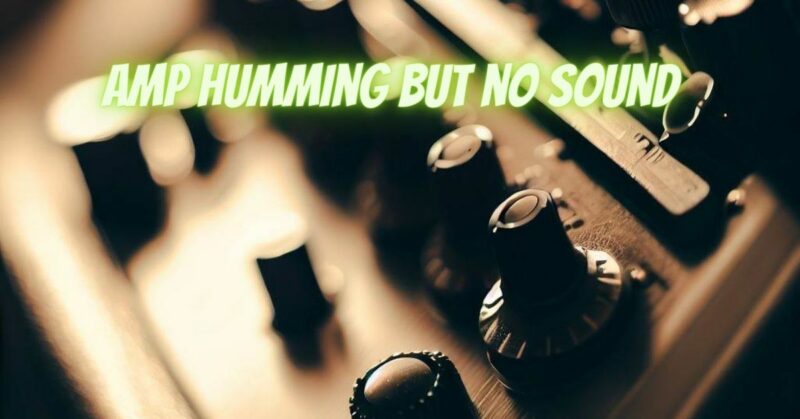There’s nothing more frustrating for a musician or audio enthusiast than encountering a humming issue in their amplifier with no sound output. This electrical symphony of hums and silence can be perplexing, but fear not, as we embark on a troubleshooting journey to resolve this problem. In this article, we will guide you through the steps to diagnose and troubleshoot an amp humming issue with no sound output, helping you restore the sweet sound of music.
Step 1: Check Connections and Cables
The first step is to ensure all connections and cables are secure and properly connected. Verify that the power cable, instrument cable, and any other inputs or outputs are firmly plugged in. A loose or faulty connection can lead to humming and signal interruptions.
Step 2: Test the Instrument and Cables
Next, eliminate the possibility of a faulty instrument or cable by testing them with a different amplifier. If the instrument and cables work fine with another amp, the issue lies within the problematic amp.
Step 3: Power Source and Grounding
Improper grounding or a faulty power source can cause humming issues in amplifiers. Check if the amp is properly grounded and connected to a stable power source. Use a surge protector or a different power outlet to rule out power-related problems.
Step 4: Isolate the Source of Hum
Disconnect all input cables from the amp and turn it on. If the hum persists, it may be an internal issue with the amp itself. If the hum disappears, reconnect the input cables one by one to identify the source of the hum. It could be caused by a faulty cable, a noisy pedal, or an issue with an external device.
Step 5: Check Tubes (For Tube Amplifiers)
If you have a tube amplifier, check the tubes for signs of wear, damage, or malfunction. A faulty tube can cause humming and affect the sound output. Consider replacing suspect tubes to see if the issue resolves.
Step 6: Inspect Capacitors and Components
For solid-state amplifiers, inspect the capacitors and other components for signs of damage or wear. Faulty capacitors can lead to hum issues and affect the amplifier’s performance.
Step 7: Seek Professional Assistance
If the humming issue persists and you are unable to identify the cause, it may be time to seek professional assistance from a qualified amp technician. They have the expertise and equipment to diagnose and repair complex amplifier issues.
Troubleshooting an amp humming issue with no sound output requires a systematic approach to identify and resolve the underlying problem. By checking connections, testing instruments and cables, ensuring proper grounding, isolating the source of hum, inspecting tubes (for tube amps), and examining capacitors and components (for solid-state amps), you can narrow down the cause of the issue. If troubleshooting becomes challenging, don’t hesitate to seek the help of a professional amp technician. With patience and diligence, you can restore your amplifier to its musical glory and enjoy the sweet sound of your instrument once again.


